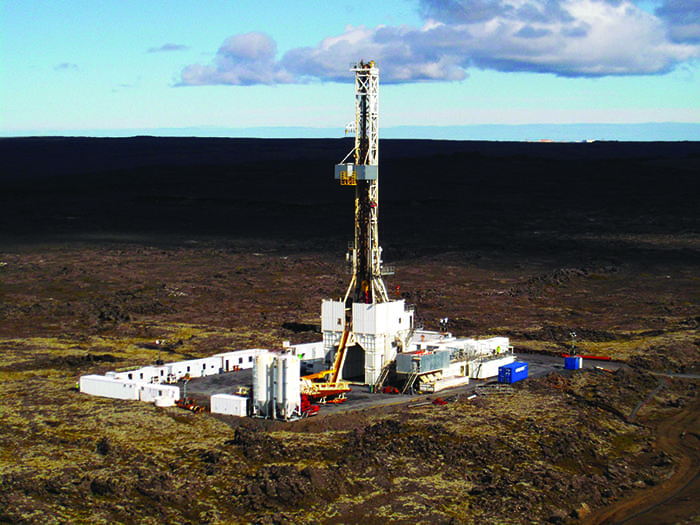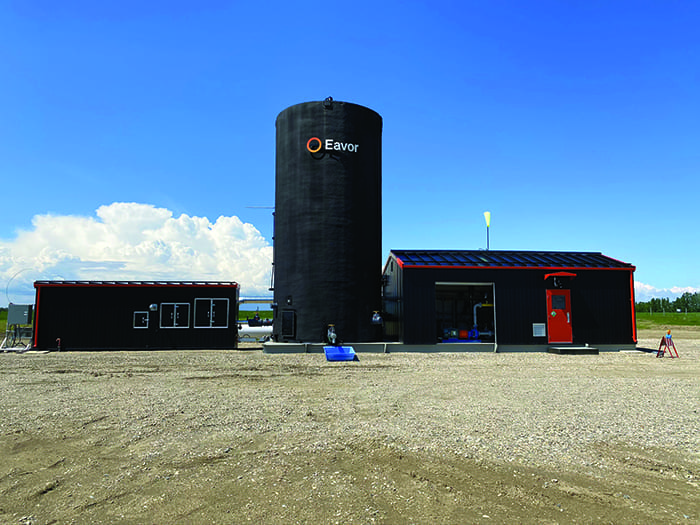Groundswell of Support Heats Geothermal Innovation
The post Groundswell of Support Heats Geothermal Innovation appeared first on POWER Magazine.

There's new interest in one of the world's oldest resources, as governments and investors worldwide look for advanced ways to tap geothermal energy.
Geothermal wells have been producing energy for more than a century, and have been an important part of many countries' power portfolios for the past several decades. Despite its long history, geothermal has never been among the world's top electricity sources. That could be changing. The global push toward decarbonization is bringing new investors into the sector, including some oil and gas majors who are betting that geothermal can be a scalable source of clean energy.
There is more focus on geothermal from an innovation perspective today versus 10 years ago," said Brian Walsh, head of WIND Ventures, the San Francisco, California-based corporate venture capital arm of COPEC, a Chilean-headquartered conglomerate. The interest stems from geothermal offering baseload, 24/7, renewable power while solar and wind are highly intermittent. It is especially interesting for green hydrogen production where capacity factor of the operation is a key consideration in the cost of the produced green hydrogen."
Growing MarketMajor deals are shaping the geothermal sector, in part as companies seek out clean energy and ESG-environmental, social, and corporate governance-investments. Atlantica Sustainable Infrastructure plc, a clean energy company, in March announced a $170 million deal to acquire Coso Geothermal Power Holdings LLC, which owns a 135-MW geothermal power plant in California. The Coso plant is the third-largest U.S. geothermal power facility and serves the California Independent System Operator (CAISO) market, which receives 6.4% of its renewable electricity from geothermal.
 |
| 1. Eavor joined with a subsidiary of Royal Dutch Shell in its field trial of the technology shown here in Alberta, Canada. Courtesy: Eavor |
BP and Chevron, two oil majors, led a $40 million funding round in February into Eavor, a Canadian geothermal firm. The Calgary-based company has developed a technology that it says creates an underground radiator." The company's system (Figure 1) consists of a closed-loop network of pipes installed typically 2 to 2.5 miles below the Earth's surface. The loop begins and ends in the same above-ground facility. The pipes are installed using advanced drilling techniques already used in oil and gas exploration.
Liquid travels in the pipes from the above-ground facility through the hot ambient underground environment, with the liquid then circulating back to the top of the loop, where it is converted into electricity or transferred to a district heating grid. The investment in Eavor is BP's first move into geothermal, and it's a re-entry for Chevron, which had dropped out of the sector in 2016.
Net Trading Group of Sweden recently signed an agreement to acquire Rock Energy Group, a company that works with renewable and sustainable energy, including geothermal. Norway-based Rock Energy has a solution for drilling deep wells-specifically, from what are called hot dry rocks, considered an enhanced geothermal system (EGS). Rock Energy has worked on a geothermal district heating system for Gardemoen airport in Oslo, Norway.
Kenya, Africa's largest geothermal producer, recently signed a framework agreement with the African Union Commission and New Zealand, with a goal of developing more Kenyan geothermal energy. Kenyan officials want to expand the country's installed electricity capacity and diversify the use of geothermal heat. As part of the agreement, Kenya's state-owned Geothermal Development Co. (GDC) will receive a grant of about $695,000 to further develop and diversify the application of natural heat from beneath the Great Rift Valley in Kenya.
GDC already harvests geothermal energy at several sites in western Kenya, and relies on independent power producers to convert the underground heat into electricity. Some of the new projects planned would use geothermal heat to pasteurize milk, power greenhouses, and for industry. A recent $14.5 million grant was awarded to GDC for the Baringo-Silali geothermal project, which will eventually produce 300 MW of electricity from three steam plants.
The U.S. Department of Energy (DOE) is supporting geothermal, particularly EGS research. The DOE's FORGE (Frontier Observatory for Research in Geothermal Energy) project in Utah recently selected 17 projects for its latest award application (see DOE Awards $46 Million for Geothermal Projects" at powermag.com).
Walsh told POWER, The DOE plays an important role in de-risking new energy technologies so that they can become attractive to venture capital investors, who de-risk them further so that they become attractive to growth equity investors, etc., etc. This funding continuum is vital to the U.S. innovation engine. The DOE's specific role tends to be supporting the earliest invention and lab experiment efforts at universities, national labs, and private labs. The impact of the DOE to have technology-focused programs, such as on EGS, is to accelerate the time from lab to commercial adoption of new EGS-related technologies."
Commercial, Industrial, and Residential ApplicationsGeothermal has been used as part of district energy systems; for example, it heats much of the downtown business district of Boise, Idaho. Darcy Solutions, a Minnesota-based company, has developed a geothermal system to heat and cool commercial and residential buildings.
Brian Larson, Darcy's CEO, told POWER his company has a philosophy of putting groundwater to work," using the thermal properties of groundwater to facilitate heating and cooling. Darcy Solutions addresses the two biggest challenges for geothermal ground source heating and cooling: cost and footprint," said Larson. Our patent-pending approach harnesses the thermal advantages of water and consistent temperature of shallow Earth to make sustainable heating and cooling practical and financially attractive for commercial and residential buildings."
Said Larson: Our technology dramatically improves system efficiency, lowering energy use and reducing site footprint requirements up to 95%. By offering project paybacks under 10 years and the greatest reduction in carbon emissions, Darcy makes its environmentally friendly heating and cooling solution viable for new construction and retrofit projects."
Larson said a current project in Minneapolis, Minnesota, is focused on cooling only. They've got a different system for their heating. [We give them] a 78% reduction in the cost for cooling," which he said provides a return on investment in five to seven years instead of 10 to 15. That's part of the appeal, and of course more and more people are interested in reducing their carbon footprint, and you're getting away from any source of emissions."
Deep DrillingThe Iceland Deep Drilling Project (IDDP) is ongoing, more than two decades after a consortium of three Icelandic energy companies founded the project. It began with the objective of drilling a 4- to 5-kilometer (2.5- to 3.1-mile) deep hole into a high-temperature hydrothermal system in order to reach 400C to 600C supercritical hydrous fluid at a rifted plate margin on a mid-ocean ridge. The feasibility report was completed in 2003, leading to a decision to drill the first IDDP candidate well at Reykjanes. That well was abandoned three years later due to a blockage, but other well sites have been identified and drilled.
 |
| 2. The drilling rig Thor is being used at the IDDP-2 well, part of the Iceland Deep Drilling Project. The rig, operated by Iceland Drilling, has been used in other geothermal projects in the Reykjanes peninsula. Courtesy: Iceland Drilling |
Baker Hughes, a longtime leading global oilfield services company, has developed and deployed a directional drilling system for high-temperature applications, including for the IDDP-2 well (Figure 2). IDDP officials have said results from that well could be presented at this year's World Geothermal Congress event, which began online sessions in late March and will culminate with a scheduled in-person event in Reykjavik, Iceland, in October.
Taylor Mattie, geothermal innovations leader for Baker Hughes, told POWER the company has applicable technology for every active geothermal region globally, and geothermal experts familiar with the unique challenges of operating in high-pressure, high-temperature applications. We have developed geothermal-specific technology and services designed to handle the extreme reservoir conditions of geothermal systems to lower costs, maximize production efficiency, and reduce risk."
Baker Hughes operates several testing facilities around the world where we simulate actual geothermal conditions, mimic well fluid compositions, and can deploy our advanced design and additive manufacturing capabilities to create and build 3D-printed prototypes and end-use parts optimized for form, fit, and function," said Mattie. An example is our research and technology center in Celle, Germany, where we can emulate the conditions of geothermal wells to test everything from high-temperature materials and components to full drilling assemblies and submersible pumps."
Mattie told POWER that as an energy technology company, Baker Hughes is working on multiple fronts to make geothermal more cost-effective and efficient. As the geothermal industry pushes the operational envelope, we are focused on technology advances that allow for deeper and faster drilling in increasingly hotter and harsher well conditions. Technologies that reduce risk and minimize upfront project costs are particularly important to geothermal operations."
Key Areas for InnovationWalsh said he sees geothermal innovation focused on three key areas:
- Drilling Technology. To reduce the cost of drilling, making geothermal less expensive to harness.
- Heat Exchanger Technology. To increase the efficiency or heat required, which potentially reduces the amount of drilling required for some applications.
- Process. To add revenue opportunities beyond heat" to a geothermal plan, such as lithium production from direct-use geothermal.
Walsh said his group is looking at geothermal technology startups that are applicable to Latin America. There are other cleantech venture capital firms that are also looking at geothermal and placing some bets to help them succeed. Should the resurgence of geothermal materialize, then I predict that we will see more ESG-related capital come into the sector to scale the new versions of geothermal into real power-producing projects."
Larson said another benefit of a geothermal heating or cooling system for a commercial building is the opportunities it opens for other energy sources to provide power. The complementary nature of the technology with something like solar," said Larson. This building in St. Paul [with a Darcy system] had 36 rooftop units on it, related to its legacy HVAC system. It now has four. In terms of the real estate it opened up for rooftop solar, now it's wide open. There's also an aesthetic benefit. The architects like not having a bunch of equipment sitting outside or on the roof."
Larson noted the trend of microgrids to power entire communities. Creating these microgrids, now a building will have its own solar array on the rooftop, and then have our [geothermal] system, and it can function as a microgrid and support that neighborhood."
-Darrell Proctor is associate editor for POWER (@POWERmagazine).
The post Groundswell of Support Heats Geothermal Innovation appeared first on POWER Magazine.